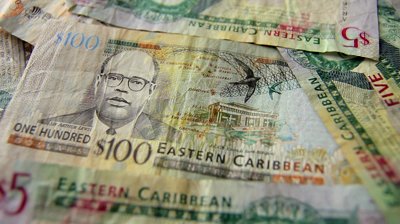The views expressed herein are those of the writer and do not represent the opinions or editorial position of I-Witness News. Opinion pieces can be submitted to [email protected].
- Cumberland Hydro Project
The Cumberland Hyrdo Project was conceived at a time when the St. Vincent Labour Party was losing popularity, and needed a substantial project that could boost short-term employment and hold a promise of reducing the cost of electricity in the long-term. It was described as a marginal project, based on projected ability to generate 25,000 MWH per annum and projected crude oil price of US$28 per barrel.
The colonial Development Corporation, at that time a 49 per cent shareholder in VINLEC with 30 years experience in hydropower generation in St. Vincent, said that the 25,000 MW was too optimistic and the US$85 million cost would be a burden on consumers. When our Government would not listen, CDC divested of their 49 per cent holding.
Several members of the Vincentian community, including former VINLEC Manager, Ken Boyea shared the views expressed by CDC and said so vociferously.
The project documents were duly signed by the outgoing government while implementation was left to the incoming administration.
Work on the project started in 1985 and we entered at the final installation testing and verification phase in March 1987. It was immediately apparent that the water flow would be inadequate for the power output specified.
To generate 25,000 MWh per annum with the 3.4 MW of generation capacity installed, the project would need to supply close to 3MW continuously, with the flow available being challenged to supply 1MW continuously.
Shawiinigan of Montreal, Canada, the project designer, was asked to explain and they prepared the “Shawiinigan Report on the Cumberland Hydro Project 1987.”
This report revealed that, in designing the project, no water flow measurements were done; the designers had looked at the water flows records from South Rivers and Richmond and had “estimated and extrapolated” to arrive at a projected flow for Cumberland. Furthermore, they had no given consideration to the existence of the potable water intake on the same river.
As we drew every last drop of water from the riverbed to test the plant, the designers were asked if they could have this Canada. They assured us that they would have left sufficient flow to sustain the life of the riverbed.
To ensure that the project made a contribution to its cost, we had to create an environmental disaster, diverting all flow from the riverbed.
- Lowmans Bay generating Project
Electricity in St. Vincent and the Grenadines should be cost-competitive with the commodity in our neighbouring islands. While Trinidad and Tobago Electricity Commission (T&TEC) supplies this commodity at US$0.06, the cost in SVG varies from US$0.30 to US$0.40.
In SVG, we need to minimize generating costs. Especially after the blunders of the Cumberland Project, therefore, we should ask the Government of SVG to justify diesel generators for the recently installed Lowmans Bay generating station.
Use of Liquefied Natural Gas (LNG) would have reduced fuel cost by half and combined-cycle operation would have reduced gas consumption by a further 33 per cent. While the equipment cost would have been increased, fuel cost could have been about 33 per cent of what presently obtained and carbon-dioxide emission would have been less than 33 per cent of the present amount.
- Geothermal Project
Now, the manner in which we propose to implement the geothermal project is likely to increase rather than reduce the cost of electricity to consumers.
Grants are available to allow us to properly assess the extent of the resource before committing to the amount of power to be extracted.
We need to look at factors leading to the high cost of electricity in SVG. One of these is the multiplicity of independent generating facilities in the multi-island state. We should also consider the expressed intention of the East Caribbean Gas Pipeline Company to bypass St. Vincent and Grenada.
If the survey indicates adequate resource, we should consider supplying Grenada via high voltage direct current line, tapping into the line to supply the grenadine islands. The economy of scale resulting from this implementation could make all the difference to the per-unit cost of the final product.
At least, let us take the time to properly consider the alternatives. If nothing else, the Cumberland Project ought to have taught us that it is folly to put cart before horse.
C. Lampkin
The opinions presented in this content belong to the author and may not necessarily reflect the perspectives or editorial stance of iWitness News. Opinion pieces can be submitted to [email protected].







and so it goes on, that is the result of putting a fiscal idiot in charge of the government, its time to get rid of him, get rid of them
Excellent piece which focuses on the technical facts, something no post-colonial government of SVG has ever been willing to do if it thinks this would adversely affect its electability (as you show). The ULP is no different from the NDP, old Labour party, or ancient PPP.
For example, the NDP did no feasibility study of the Bequia airport which was a one-man project; the ULP did no feasibility study of the still unfinshed Argyle International Airport which is a one-man project.
The upcoming election should be an opportunity for all us to consider that the worst thing about our beloved country, by far, is the way our political system and our politicians operate.
But this will not happen as our m/asses mindlessly jump up and down to the tune of their political masters.